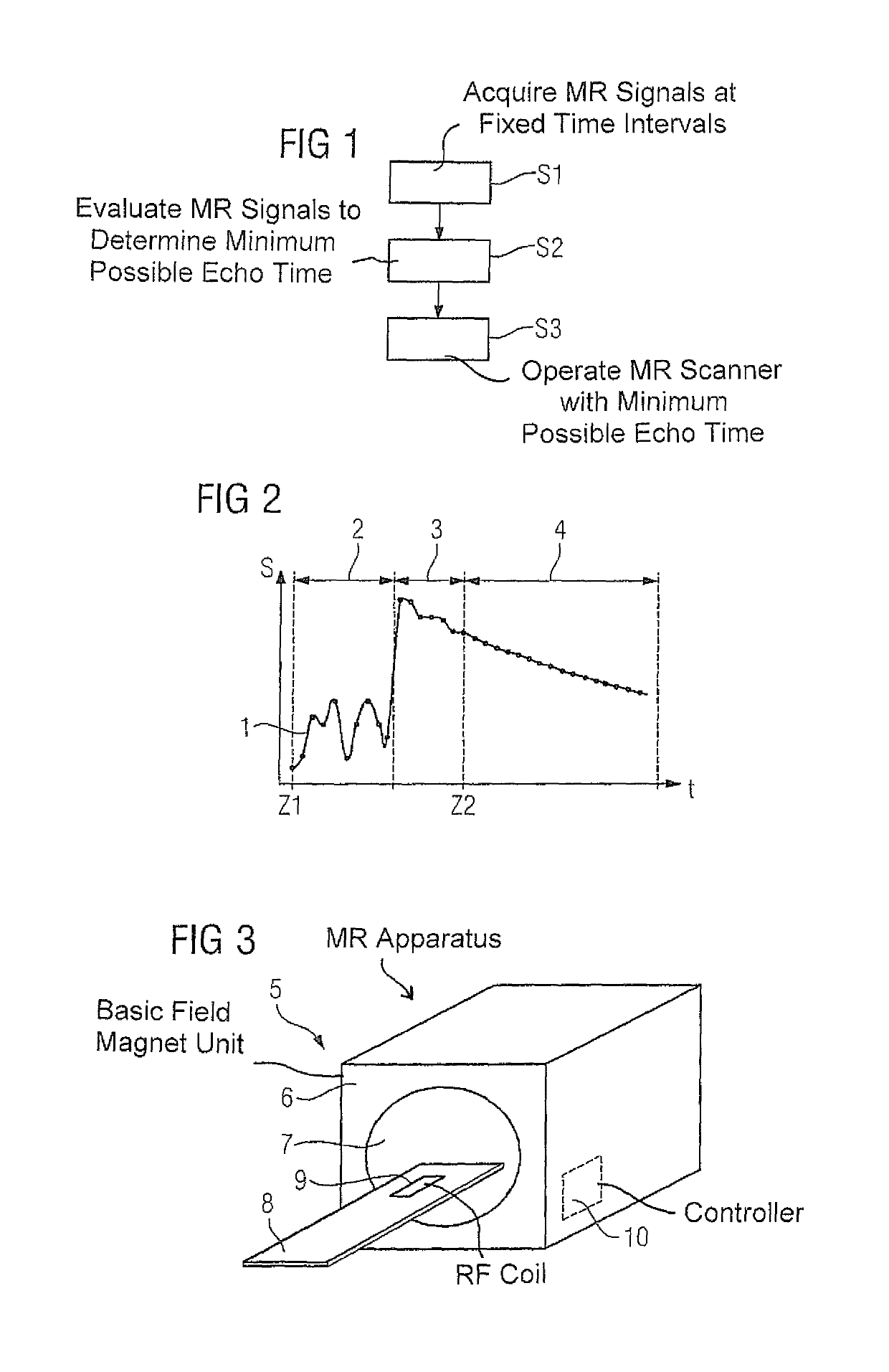Method and magnetic resonance apparatus for determining a minimized echo time
a magnetic resonance apparatus and echo time technology, applied in the direction of magnetic measurement, instruments, measurements using nmr, etc., can solve the problem of poor signal-to-noise ratio for substances with an extremely short t2 relaxation time, decayed magnetic resonance signal of these materials/substances, image artifacts, etc., to achieve the effect of shortening the possible echo tim
- Summary
- Abstract
- Description
- Claims
- Application Information
AI Technical Summary
Benefits of technology
Problems solved by technology
Method used
Image
Examples
Embodiment Construction
[0025]FIG. 1 shows a basic flowchart of exemplary embodiments of the inventive method. In a step 1 a magnetic resonance measurement is performed, a free induction decay being recorded in a single repetition with a radio-frequency coil, by measuring magnetic resonance signals at fixed time intervals, in this case of 2 μs. In this exemplary embodiment the magnetic resonance measurement starts immediately after the termination of the excitation pulse which precedes it.
[0026]In step S2 the time series of magnetic resonance signals is evaluated, in order to determine a minimum possible echo time in the combination of magnetic resonance device used and radio-frequency coil for the data recording to be performed. To this end the measurement instant (point in time) should be determined, from which an exponential signal decay was measured.
[0027]One possible profile 1 of the measured magnetic resonance signal S of a free induction decay with respect to time t is shown in FIG. 2. The points al...
PUM
 Login to View More
Login to View More Abstract
Description
Claims
Application Information
 Login to View More
Login to View More - R&D
- Intellectual Property
- Life Sciences
- Materials
- Tech Scout
- Unparalleled Data Quality
- Higher Quality Content
- 60% Fewer Hallucinations
Browse by: Latest US Patents, China's latest patents, Technical Efficacy Thesaurus, Application Domain, Technology Topic, Popular Technical Reports.
© 2025 PatSnap. All rights reserved.Legal|Privacy policy|Modern Slavery Act Transparency Statement|Sitemap|About US| Contact US: help@patsnap.com

